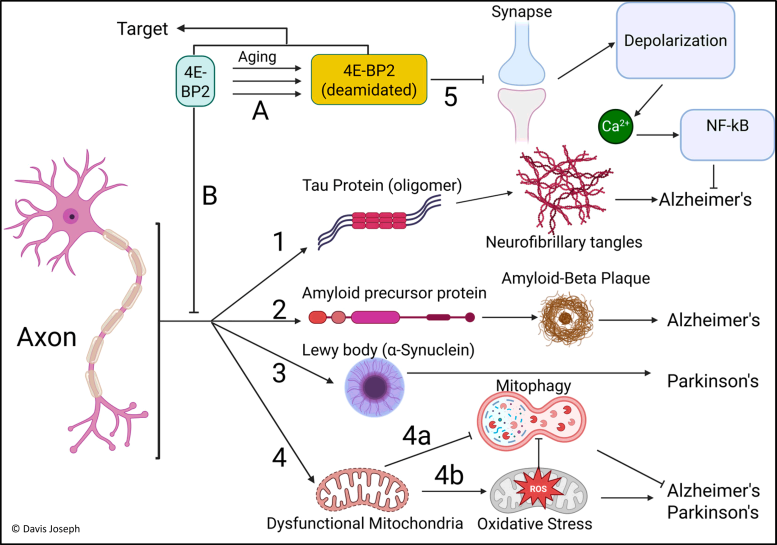 A game-changing discovery links major brain diseases through a common biochemical mechanism, opening the door to unified treatments.
A game-changing discovery links major brain diseases through a common biochemical mechanism, opening the door to unified treatments.A scientist has discovered a biochemical “master switch” that connects and potentially cures Alzheimer’s and Parkinson’s. His theory may revolutionize brain disease treatment and sustainable medicine.
At the upcoming Sustainability Through Science and Technology Summit 2025 (SIPS 2025), Nobel Laureate Prof. Aaron Ciechanover will be honored in a special event taking place in Cebu, Philippines, from November 17 to 20. Among the highlights, Davis Joseph will take the stage as a plenary lecturer to share a discovery that is sending shockwaves through the world of neuroscience.
A Common Master Switch for Brain Diseases Discovered
Joseph has identified something researchers have searched for over a century without success—a shared master switch behind Alzheimer’s, Parkinson’s, and other major brain disorders. Despite each disease having its own unique traits, Joseph developed a unified theory showing that their progression can be traced back to one core biological mechanism: the regulation of a chemical process called 4E-BP2 protein deamidation within brain cell axons.
This process, when disrupted, causes proteins in the brain to malfunction. In aging patients, the rate of deamidation becomes abnormally high, leading to widespread cellular damage. By targeting this shared switch and bringing deamidation levels back to normal, Joseph’s research suggests these devastating diseases could potentially be treated—or even cured—with a single strategy.
 Davis Joseph during the plenary presentation about his second groundbreaking discovery of a common master switch to cure Alzheimer’s, Parkinson’s, and other brain-related diseases at the International Congress of Sustainable Innovations in Medicine 2025. Credit: FLOGEN Star Outreach
Davis Joseph during the plenary presentation about his second groundbreaking discovery of a common master switch to cure Alzheimer’s, Parkinson’s, and other brain-related diseases at the International Congress of Sustainable Innovations in Medicine 2025. Credit: FLOGEN Star OutreachUnified Theory Links Alzheimer’s and Parkinson’s
This breakthrough is significant because Parkinson’s disease, first described in 1817, Alzheimer’s disease, first described in 1906, and other neurodegenerative diseases have been studied separately in biochemistry and therapeutic drug development, and no causal link has ever been established between them. Davis Joseph discovered this link and made the dividing wall between these brain-related diseases disappear, making it possible to treat them by regulating a shared master switch.
Additionally, this breakthrough is crucial since it bridges for the first time four different research fields: the biochemical processes of deamidation, translational control, oxidative stress, and neurodegeneration through axon-based 4E-BP2 protein deamidation that serves as a common denominator for all of them.
 Davis Joseph’s Unified Theory of Alzheimer’s, Parkinson’s, and other brain-related diseases. Credit: FLOGEN Star Outreach
Davis Joseph’s Unified Theory of Alzheimer’s, Parkinson’s, and other brain-related diseases. Credit: FLOGEN Star OutreachSustainable Medicine Through a Scientific Breakthrough
Furthermore, this discovery is an example of sustainable medicine as per FLOGEN Sustainability Framework because it fulfills the three criteria of sustainability: (1) Social Development since it improves the quality of human life (2) Economic Development, since it decreases the cost of medicine applicable to numerous diseases and (3) Environment Protection since it decreases the amount of resources that is needed to produce medicine.
Based on this newly developed Unified Theory and his critical review of the scientific literature, he also designed for the first time three biochemical flowsheets of (1) deamidation in living organisms, (2) protein synthesis initiation and translational control, and (3) 4E-BP2 deamidation as a control system of the four biochemical processes.
 Davis Joseph giving an Interview at the Paraguay-China Chamber of Commerce and Industry in Asunción, Paraguay, about his major second discovery of a common master switch to cure Alzheimer’s, Parkinson’s, and other brain-related diseases. Credit: FLOGEN Star Outreach
Davis Joseph giving an Interview at the Paraguay-China Chamber of Commerce and Industry in Asunción, Paraguay, about his major second discovery of a common master switch to cure Alzheimer’s, Parkinson’s, and other brain-related diseases. Credit: FLOGEN Star OutreachGlobal Recognition and Record-Breaking Impact
The discovery was published on April 27th, 2025, in the prestigious International Journal of Molecular Sciences (IJMS), a Q1 journal. The full paper has been accessed more than 1700 times in less than 21 days, a world record for a single-author scientific publication. The discovery and this publication have been covered by more than 500 media organizations around the world. It was also presented as a plenary lecture at the Congress of Modern Sustainable Medicine in Asuncion, Paraguay, on April 30th, 2025.
This is Davis Joseph’s second discovery in the last five months. The first discovery, known as Davis Joseph’s principle, was the fundamental neurobiological mechanism of 4E-BP2 protein deamidation, which determined that axons, a cable-like structure of brain cells, are the key factor of deamidation in the brain. This first discovery, described as Nobel Prize worthy by Dr. Harvey Alter and Dr. Gregg Semenza, 2020 and 2019 Nobel Laureates in Physiology and Medicine, respectively, was published on November 15, 2024, also in IJMS. The full paper has been accessed more than 8000 times in less than 6 months, another world record for a single-author scientific publication, and has been covered by more than 500 media outlets, including the Associated Press.
For this discovery, Davis Joseph was awarded the Semenza International Cell Engineering Award at the FLOGEN Stars Outreach/2024 Sustainability through Science and Technology Summit (SIPS 2024) held in Crete, Greece in October 2024.
”Alzheimer’s and Parkinson’s diseases are two awful diseases, and Davis’s work to try to combat them is extraordinary. I am proud to be his representative in the House of Commons”, says Anthony Housefather, Member of Parliament, Canada
Reference: “The Unified Theory of Neurodegeneration Pathogenesis Based on Axon Deamidation” by Davis Joseph, 26 April 2025, International Journal of Molecular Sciences.
DOI: 10.3390/ijms26094143
Never miss a breakthrough: Join the SciTechDaily newsletter.
.png)

![Inigo Quilez – Unlocking Creativity with Signed Distance Fields [video]](https://www.youtube.com/img/desktop/supported_browsers/chrome.png)

